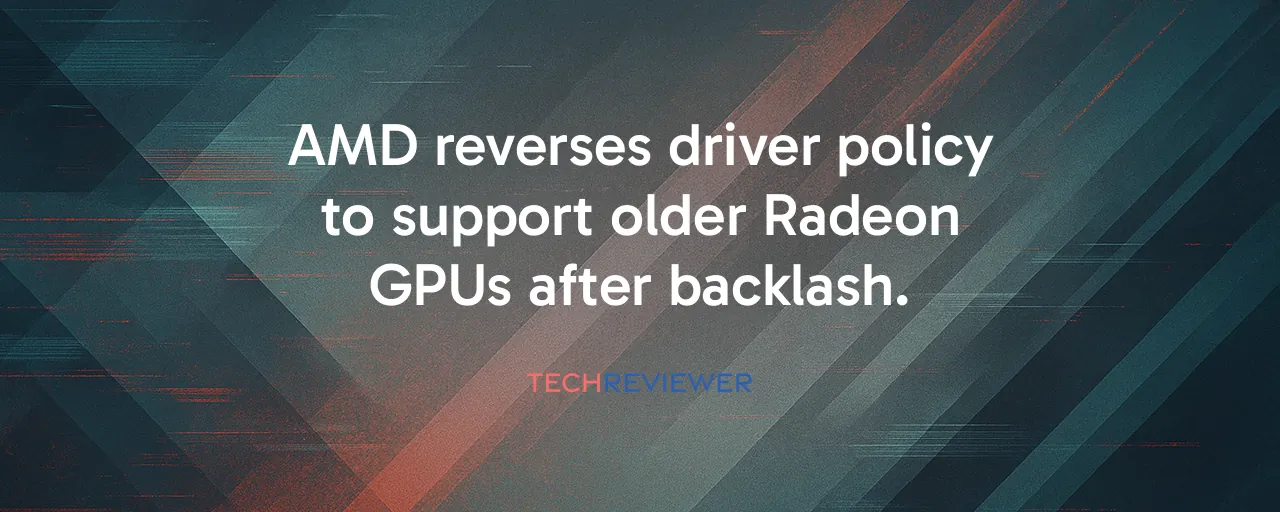Driver Release Sparks Immediate Confusion
AMD launched the Adrenalin Edition 25.10.2 driver on October 29, 2025, and things quickly went sideways. Users spotted release notes that limited new game optimizations and Vulkan extensions to RX 7000 and RX 9000 series cards, leaving RX 5000 and RX 6000 owners, many with hardware from 2020 or later, facing only basic fixes going forward. An erroneous claim about disabling USB-C power delivery on RX 7900 cards added fuel to the fire, forcing a rapid correction within a day.
The initial clarification from AMD on October 30 described RDNA 1 and RDNA 2 entering maintenance mode. Media outlets picked up the story, amplifying concerns that four-year-old cards faced early retirement. Gamers voiced frustration online, pointing out the cards still handled modern titles at 1440p resolutions without issue.
Community Pressure Forces Policy Shift
Over the weekend of October 30 and 31, feedback poured in from desktop users and handheld device owners. Manufacturers like ASUS, with ROG Ally models relying on RDNA 2, expressed worries about long-term viability. By November 2, AMD published a dedicated page titled 'Continued Support for Every Radeon Gamer'. The company confirmed RX 5000 and RX 6000 series would keep receiving day-zero game support, stability tweaks, and security patches.
This turnaround highlighted how direct user input shapes company decisions. AMD acknowledged the confusion in a statement and committed to separate driver branches. One path focuses on RDNA 1 and 2 stability, while the other accelerates features for RDNA 3 and 4.
Separate Code Paths Balance Efficiency and Reach
AMD engineers now maintain parallel development lines. The RDNA 1 and 2 branch builds on years of tuning, delivering reliable performance for existing games. Newer architectures get faster iterations without risking regressions on older hardware. This setup prevents changes tailored to ray tracing or machine learning enhancements in RDNA 3 from disrupting Infinity Cache operations in RDNA 2.
Game developers gain clarity on optimization targets. Titles pushing RDNA 4 capabilities avoid constraints from older designs, yet RDNA 2 users still see launch-day improvements through dedicated work.
Handheld Devices Highlight Support Value
Valve's Steam Deck runs on RDNA 2 and has benefited from consistent driver updates, boosting frame rates in demanding games. Regular optimizations help these portable systems compete at lower power levels. ASUS ROG Ally follows a similar path, depending on AMD's commits to maintain performance parity with desktop counterparts.
Without ongoing tweaks, handheld gamers risk stuttering in new releases. The reversal ensures these devices stay relevant, supporting a growing market segment that prioritizes portability over raw power.
Mid-Range Cards Extend Hardware Lifecycles
Owners of RX 6600 XT and comparable models often game at 1080p or 1440p. These cards, released between 2020 and 2022, deliver solid results in current libraries. Continued optimizations mean players delay upgrades, stretching hardware investments across multiple years.
Nvidia provides a benchmark here. The company supported Pascal architecture for eleven years with game-ready drivers before shifting to security updates in 2025. AMD's adjusted approach aligns closer to such timelines, rebuilding trust among buyers wary of short support windows.
Resource Trade-Offs Shape Future Releases
Maintaining two branches demands extra testing and coordination. AMD balances this by prioritizing critical fixes across both while directing new API extensions to recent hardware. Observers note RDNA 1 and 2 share enough traits for shared strategies in areas like memory access.
Looking ahead, market share in mid-range and handheld segments will likely sustain investment in the older branch. Developers shifting focus to RDNA 4 titles may reduce universal optimizations, but committed support prevents abrupt drop-offs.
